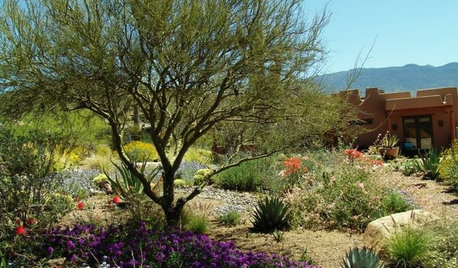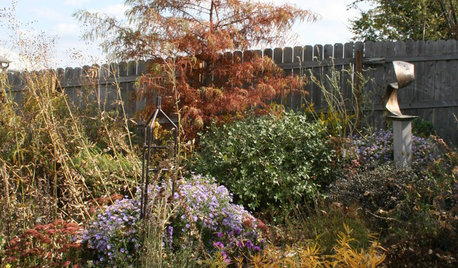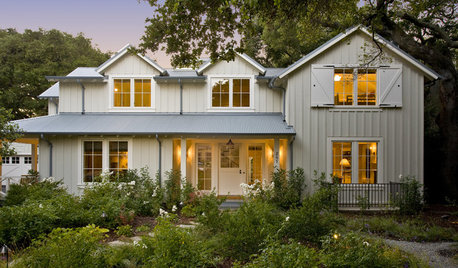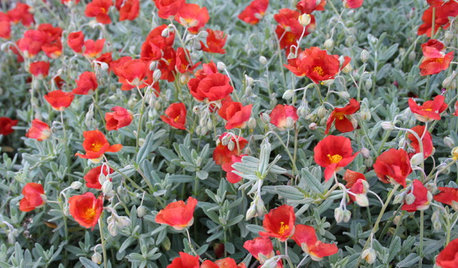Xeriscape Mulch?
humster
17 years ago
Related Stories

GARDENING GUIDESHow to Pick a Mulch — and Why Your Soil Wants It
There's more to topdressing than shredded wood. Learn about mulch types, costs and design considerations here
Full Story
SAVING WATERXeriscape Gardens: How to Get a Beautiful Landscape With Less Water
Conserve water and make gardening much easier with the xeriscape approach’s 7 principles
Full Story
DESIGN DICTIONARYXeriscape
Drought-tolerant plants and efficient irrigation form the heart of ecofriendly xeriscape landscaping
Full Story0

REGIONAL GARDEN GUIDESCentral Plains Gardener's October Checklist
Fall foliage color and crisp mornings, plus mulching beds and planting spring bulbs, make October a gardener's heaven
Full Story
LANDSCAPE DESIGNWater-Saving Landscaping Ideas for Traditional Homes
Who says you need a lawn and roses in front of your traditional house? Try some of these drought-tolerant beauties instead
Full Story
GARDENING GUIDESGreat Design Plant: Sunrose Dazzles on Dry Slopes
Abundant blooms and attractive foliage make this plant a welcome sight in sunny, well-drained spots
Full Story
GARDENING GUIDESGardening Solutions for Dry, Sandy Soils
Has your desert or beachy site withered your gardening creativity? Try these ideas for a beautiful, easy-care landscape
Full Story
FRONT YARD IDEASBefore and After: Front Lawn to Prairie Garden
How they did it: Homeowners create a plan, stick to it and keep the neighbors (and wildlife) in mind
Full Story
SAVING WATERHouzz Call: Are You Letting Go of Your Lawn?
Many facing a drought are swapping turf for less thirsty plantings. If you’re one of them, we’d like to hear about it
Full Story
LANDSCAPE DESIGN15 Great Ideas for a Lawn-Free Yard
End the turf war for good with hardscaping, native grasses and ground covers that save water and are easier to maintain
Full StorySponsored
Your Custom Bath Designers & Remodelers in Columbus I 10X Best Houzz






abq_bob
humsterOriginal Author
Related Professionals
New Bedford Landscape Architects & Landscape Designers · North New Hyde Park Landscape Architects & Landscape Designers · Summit Landscape Architects & Landscape Designers · Peabody Landscape Contractors · Tempe Landscape Contractors · Battle Ground Landscape Contractors · Federal Way Landscape Contractors · Golden Landscape Contractors · Hannibal Landscape Contractors · La Verne Landscape Contractors · Maywood Landscape Contractors · North Lauderdale Landscape Contractors · Paterson Landscape Contractors · Round Lake Landscape Contractors · South Farmingdale Landscape ContractorshumsterOriginal Author
ruralnm
humsterOriginal Author
dallasbill
shudavies
randit
xericgardening
strudlahead
humsterOriginal Author